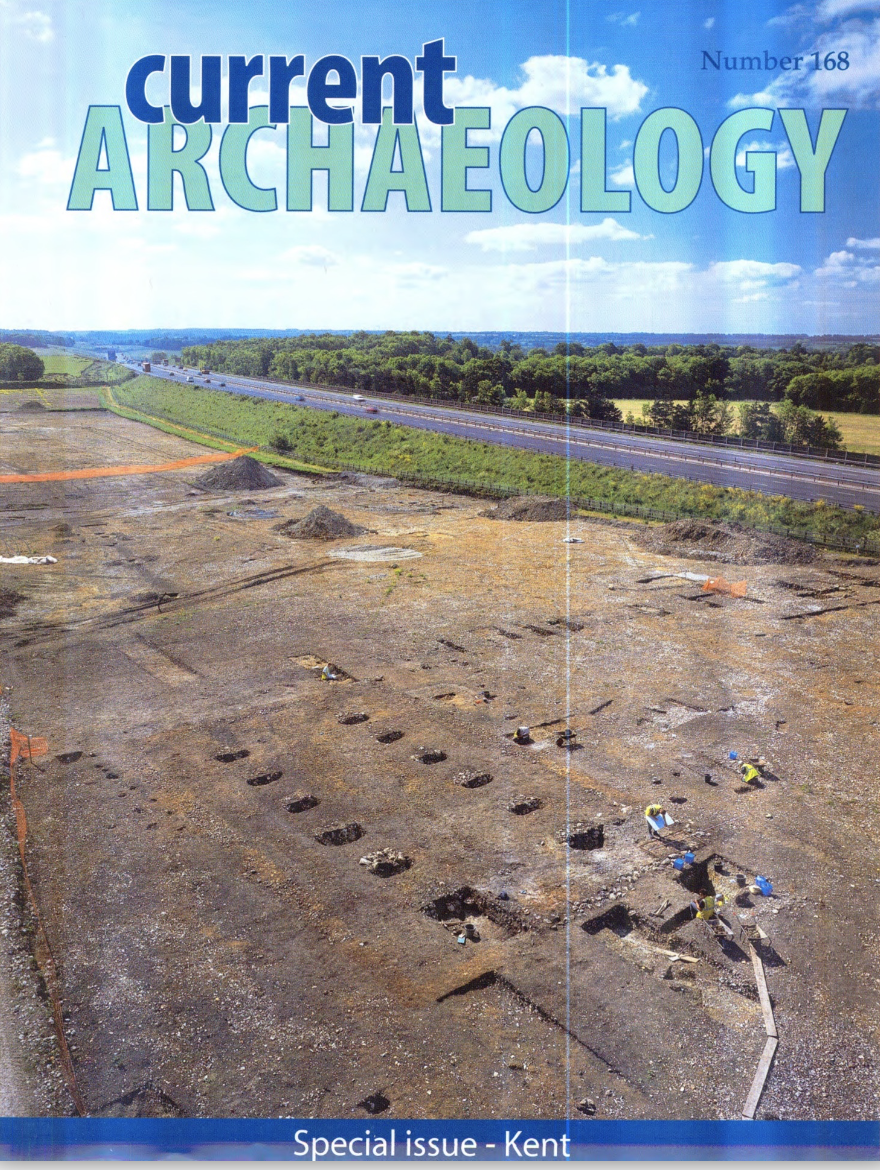“How about a special issue on Kent?” said John Williams, the Kent County Archaeologist. “You have had special issues on Scotland and Hadrian’s Wall – how about something from the Garden of England?” This then is a special issue on Kent, masterminded and largely edited by John Williams – and also, incidentally, a fascinating example of the work of a County Archaeologist using PPG16 and the planning process as a research tool to investigate the archaeology of the County.
Kent has in fact seen the largest archaeology project yet to take place in this country in the work of the Channel Tunnel Rail Link,a slice 50 miles long through the county. The discoveries form the first half of this issue, and Helen Glass, the Senior Archaeologist for Rail Link Engineering, has co-ordinated, and largely written this section.
The biggest surprise was perhaps the best example of a Neolithic long house yet found in this country, discovered at White Horse Stone: are these the Neolithic settlers? Then at Thurnham there is one of the most complete Roman villas yet uncovered, together with all its outbuildings, while there are two Saxon cemeteries at Cuxton and Saltwood – the latter a very rich one revealing two Coptic bowls.
There is also a Roman cemetery at Spring head, a Medieval moated site at Parsonage Farm and Medieval iron working at Mersham.
Part two of this issue consists of some of the rest of the work in Kent. The most remarkable highlight is the newly discovered Roman town – perhaps we should call it a small town – at Westhawk Farm near Ashford, which raised some fascinating dilemmas: how much to excavate? how much to preserve?
One of the peculiarities of Kent in the Neolithic has long been that it lacked any causewayed camps: now two have been discovered in the course of rescue operations. At North Foreland, a hoard of Iron age coins was found just outside an enclosure, while at Dover we study the dwellings of the fishermen of the Cinque Ports, and at Lydd we can see the gradual Medieval encroachment on the Romney Marshes.
This issue brings to the end the 14th volume of Current Archaeology and we conclude with the Index. May we therefore take this opportunity to thank all those who have made Current Archaeology possible: to all the excavators who have told us about their work, written it up for us, allowed us to hack it around and have then corrected our corrections and have still come up smiling at the end of it. To all our contributors and to all our many subscribers, our grateful thanks: I hope we have produced a magazine of which British Archaeology can be proud!

